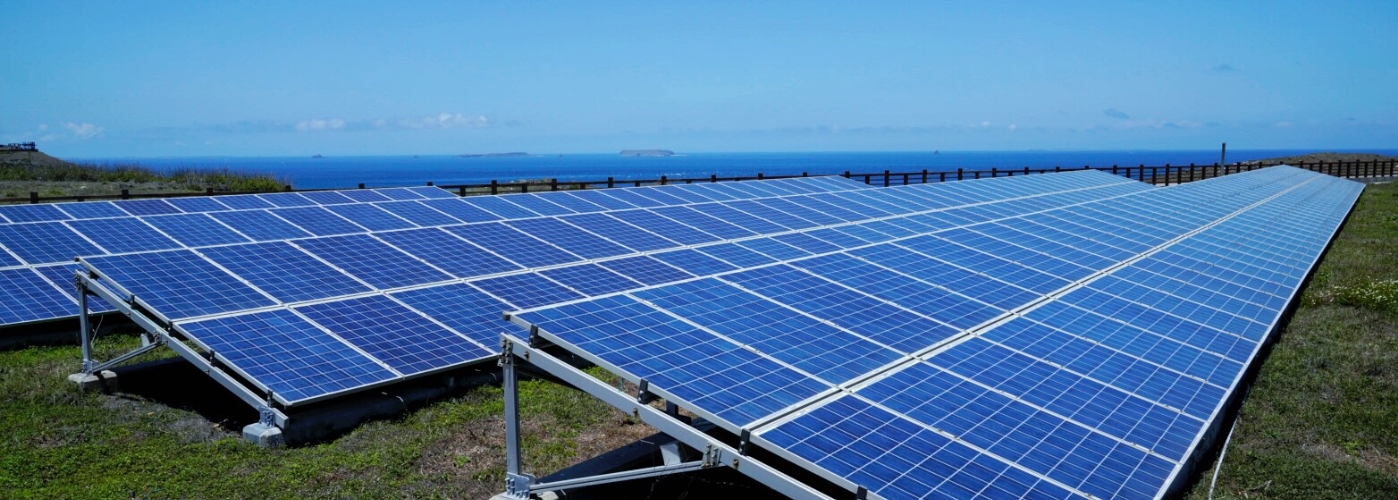Promotion of Microgrids
A microgrid is a localized energy system that integrates power generation,energy storage,and energy management. It can operate independently or in parallel with Taipower's main grid, thereby enhancing power supply stability and disaster resilience.To promote energy autonomy and the development of green energy, Taipower has introduced microgrid technologies in remote areas and offshore islands, aiming to ensure a "stable grid in normal times and resilient grid during disasters."Furthermore, to strengthen regional grid resilience, Taipower has launched regional energy storage projects at eight secondary substations across the main island to expand microgrid applications.
Developing Microgrid and Energy Storage Integration Technologies
Taipower is building microgrids in rural and offshore areas with the dual purpose of reducing the cost of electricity generation on offshore islands and addressing the risk of isolated power outages in remote mountainous areas during major disasters where both transportation and electricity/communications may be cut off-.The initiative also has the benefit of moving small offshore islands toward the goal of low-carbon or carbon-free islands. The microgrids consist of distributed power sources, energy storage systems, energy management systems (EMS), and protection devices. They can supply electricity to meet local demand and remain connected to Taipower's transmission and distribution network under normal conditions. In some cases, these systems can even feed electricity back into the grid. During power outages, the microgrid can function independently as self-sufficient mini power system,ensuring uninterrupted electricity supply.
Offshore Island Power Planning Toward Green and Low-Carbon Islands
Taipower continues to improve power supply quality on offshore islands. In 2018,it established the first offshore smart microgrid demonstration system at the Qimei Green Energy Park. In 2020,Taipower promoted smart grid development,positioning Kinmen as a "Smart Low-Carbon Demonstration Island."To enhance supply stability,smart substations and distribution automation systems were installed,significantly reducing power outages. Smart meters were fully deployed across the area,further improving grid stability.Kinmen's total installed generation capacity is 113.3 MW,sufficient to meet the current peak demand of 60 MW.The peak demand is expected to increase to 65 MW by 2031,which remains within supply capacity. Looking ahead,Taipower will continue promoting renewable energy development and strengthening grid resilience to improve offshore power quality.

Functions and Safety Planning of Energy Storage Systems
To address the intermittency of renewable energy integration,Taipower installs energy storage systems that stabilize grid frequency,enhance dispatch flexibility,and ensure a stable power supply.Since 2021,Taipower has operated a power trading platform. In 2022, it introduced E-Reg energy storage technology and began planning for 1,000 MW of storage capacity. This includes 160 MW of self-built battery storage and 840 MW of ancillary services. The system regulates frequency through rapid battery charge/discharge to maintain grid stability. As of 2024, Taipower has completed 160 MW of self-built energy storage systems, including 20 MW at Tainan Yantian Solar Site, 20 MW at Kaohsiung Luyuan Substation,and 60 MW at Longtan EHV Substation. The Dongshan Storage System (60 MW) is scheduled to begin operation in November 2024. These systems help smooth out demand fluctuations, reduce system instability risks, and further enhance supply reliability to meet renewable energy challenges.
Improving the Accuracy of Renewable Energy Generation Forecasts
In response to the energy transition and changes in the power supply structure,power grids and generation equipment must be upgraded to enable real-time monitoring of generation.As renewable energy is weather-dependent and less stable than conventional sources, monitoring systems are also essential for its effective management and dispatching. Additionally,Taipower will install real-time monitoring systems for coal-fired units to reduce failure rates and maintenance times. Future smart dispatch and generation efforts will focus on improving energy efficiency, increasing the share of renewable energy grid connection, and enhancing plant performance and reliability. This will be achieved by integrating DREAMS, Advanced Metering Infrastructure(AMI),and forecasting systems to ensure the successful integration of 20% renewable energy into the grid. Taipower has planned key initiatives,including a renewable energy information platform, an electricity trading platform,and a big data monitoring system for coal-fired units, with a total investment of NT$1.742 billion.A five-year,real-time power system inertia measurement project has been launched in collaboration with the UK-based Reactive Technologies Limited (RTL) to enhance supply stability.Real-time frequency change rate measurement systems have been installed at 10 service sites across Taiwan. In 2024, the Dongshan energy storage site completed its periodic power modulation function to support real-time inertia measurement.

Renewable Energy Grid Connection Policy

01Enhancing Offshore Wind Power Grid Connection Capacity
Taiwan's central offshore areas boast excellent wind conditions. To support the government's offshore wind policies, including the 2020–2025 selection and auction and the 2026–2031 Phase 1 Zonal Development, Taipower has inventoried the existing grid capacity of approximately 3.5 GW. By adding capacity from the two previously planned phases of the Offshore Wind Grid Reinforcement Program, the total grid interconnection capacity is projected to increase by about 17 GW, reaching a combined total of 20.5 GW.
02Enhancing Solar Power Grid Connection Capacity
The abundant sunlight in central and southern Taiwan is a valuable natural resource. Taipower plans to complete reinforcement projects for 9 new renewable energy substations and 10 associated transmission lines between 2022 and 2025 for solar power. This will cumulatively add an extra 6.5 GW of grid interconnection capacity for solar power.
03Planning Regional Green Energy Concentration for Direct Supply to Load Centers
Taipower is planning the new construction of the Liuke EHV Substation and 345 kV EHV lines to supply green energy from nearby solar power projects directly to the Southern Taiwan Science Park (Nanke). Additionally, the new Bei-Miao EHV Substation and 345 kV EHV lines are planned to route green energy from central offshore wind farms directly to the Hsinchu Science Park (Hsinchu). By setting up these direct-supply-to-load-center connections, Taipower increases grid decentralization, effectively "putting eggs into different baskets."


